 Search by Keyword
Sign Up Below for our MONTHLY BEATLES TRIVIA QUIZ!
|
"TELL ME WHAT YOU SEE"
(John Lennon - Paul McCartney)
Beatles enthusiasts the world over probably could not fathom anyone having the audacity to tell Paul McCartney that one of his songs wasn't good enough. But that is exactly what happened sometime in March of 1965.
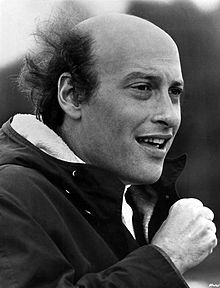 Richard Lester was the director of The Beatles' second motion picture "Help!" His overall job was to oversee every detail of this movie in order to assure its comedic and musical flow. Therefore, he had the final say as to what songs would be used in the film. In February of 1965, The Beatles recorded eleven songs and submitted them as contenders for the movie soundtrack. Since the title track to the movie wasn't recorded until April, only six of those eleven songs were chosen for the movie. Richard Lester was the director of The Beatles' second motion picture "Help!" His overall job was to oversee every detail of this movie in order to assure its comedic and musical flow. Therefore, he had the final say as to what songs would be used in the film. In February of 1965, The Beatles recorded eleven songs and submitted them as contenders for the movie soundtrack. Since the title track to the movie wasn't recorded until April, only six of those eleven songs were chosen for the movie.
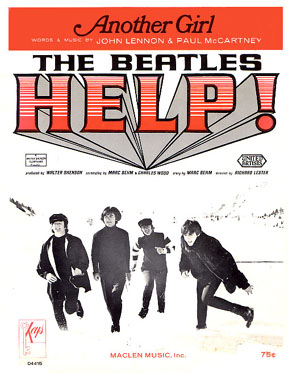 Four of the eleven songs were written primarily by Paul and featured him singing lead vocals. But only two of these were deemed good enough by Richard Lester to be in the film, "The Night Before" and "Another Girl." Another of these four, "That Means A Lot," ended up not being released at all (until the 1996 "Anthology 2" album, that is). The fourth song was a quickly recorded fictional love ballad called "Tell Me What You See." Richard Lester just didn't feel it was up to par. But The Beatles felt otherwise, so it did get released on the British "Help!" soundtrack album anyway, even though the director wouldn't let it be in the movie. Four of the eleven songs were written primarily by Paul and featured him singing lead vocals. But only two of these were deemed good enough by Richard Lester to be in the film, "The Night Before" and "Another Girl." Another of these four, "That Means A Lot," ended up not being released at all (until the 1996 "Anthology 2" album, that is). The fourth song was a quickly recorded fictional love ballad called "Tell Me What You See." Richard Lester just didn't feel it was up to par. But The Beatles felt otherwise, so it did get released on the British "Help!" soundtrack album anyway, even though the director wouldn't let it be in the movie.
Songwriting History
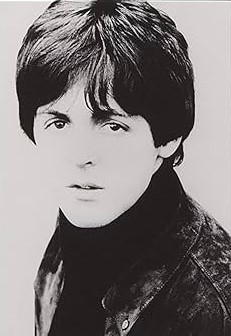 Usually, the best way to discover the writing history of a song is from its writers. Unfortunately, we don't have much to go on concerning the song "Tell Me What You See." John Lennon only had one word to say about the song: "Pauls." And Paul McCartney's recollections are somewhat sketchy: Usually, the best way to discover the writing history of a song is from its writers. Unfortunately, we don't have much to go on concerning the song "Tell Me What You See." John Lennon only had one word to say about the song: "Pauls." And Paul McCartney's recollections are somewhat sketchy:
"I seem to remember it as mine. I would claim it as a 60-40 but it might have been totally me. Not awfully memorable. Not one of the better songs but they did a job, they were very handy for albums or b-sides. You need those kind of sides."
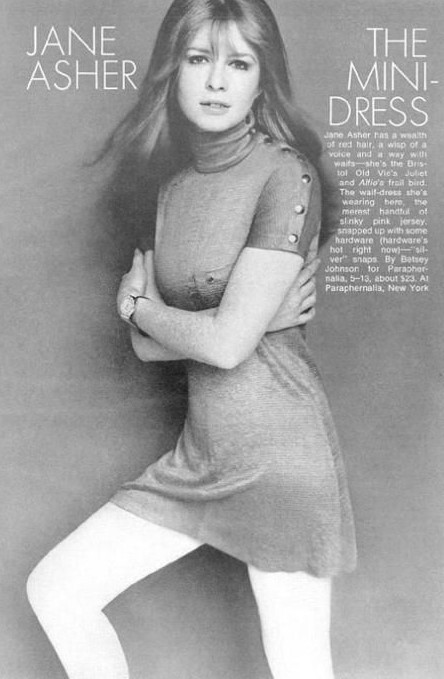 One thing that we can discern is that the song was probably written very shortly before its recording session on February 18th, 1965. This can be said because it's quite apparent that the group was struggling to record it, assumingly because they were just learning it themselves. Although the Beatles were very busy throughout most of 1964, the beginnings of 1965 saw them all enjoying a good degree of "down-time." Paul and his girlfriend Jane Asher, for instance, took a vacation to Tunisia in January while their first recording session wasn't until February 15th of that year. This being the case, the song was undoubtedly written while on "holiday" or just after, which would date the time of its writing to sometime in January or February of 1965. One thing that we can discern is that the song was probably written very shortly before its recording session on February 18th, 1965. This can be said because it's quite apparent that the group was struggling to record it, assumingly because they were just learning it themselves. Although the Beatles were very busy throughout most of 1964, the beginnings of 1965 saw them all enjoying a good degree of "down-time." Paul and his girlfriend Jane Asher, for instance, took a vacation to Tunisia in January while their first recording session wasn't until February 15th of that year. This being the case, the song was undoubtedly written while on "holiday" or just after, which would date the time of its writing to sometime in January or February of 1965.
Recording History
 The fourth day of recording songs intended for the soundtrack of their second movie was on February 18th, 1965 in EMI Studio Two. The Beatles had two recording sessions on this day; one from 3:30 to 5:15 pm (that saw John's song "You've Got To Hide Your Love Away" to completion) and an evening session from 6 to 10:30 pm (that resulted in "If You've Got Trouble" and "Tell Me What You See" being completed). Before the first session and in between the two, mono mixes were made for the songs recorded in the previous three days. The fourth day of recording songs intended for the soundtrack of their second movie was on February 18th, 1965 in EMI Studio Two. The Beatles had two recording sessions on this day; one from 3:30 to 5:15 pm (that saw John's song "You've Got To Hide Your Love Away" to completion) and an evening session from 6 to 10:30 pm (that resulted in "If You've Got Trouble" and "Tell Me What You See" being completed). Before the first session and in between the two, mono mixes were made for the songs recorded in the previous three days.
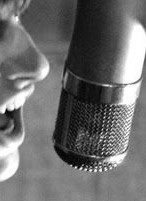 The first hour of the evening session was devoted to recording the Lennon / McCartney composition "If You've Got Trouble," which was created especially for Ringo to sing in the movie (and ended up being scrapped). With that out of the way, they went to work on the newly written "Tell Me What You See." According to George Martin's handwritten notes, the recording of this entire song took two hours, from 8:30 to 10:30 pm. The first hour of the evening session was devoted to recording the Lennon / McCartney composition "If You've Got Trouble," which was created especially for Ringo to sing in the movie (and ended up being scrapped). With that out of the way, they went to work on the newly written "Tell Me What You See." According to George Martin's handwritten notes, the recording of this entire song took two hours, from 8:30 to 10:30 pm.
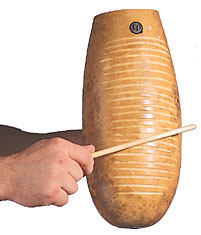 The new procedure of recording vocals afterwards as overdubs meant that the four takes it took to get an acceptable version of the song comprised a rhythm track only. The above mentioned handwritten notes indicate that this consisted of Paul on bass, Ringo on drums, John on his Fender Stratocaster guitar and George on guiro, described on the tape box as "Latin American percussion." A guiro is an Afro-cuban rhythm instrument which looks like a grooved cylinder that is rubbed with a stick. All of this was recorded onto track one of the four-track tape. "Take four" was deemed best and was used as a bed for multiple overdubs. The new procedure of recording vocals afterwards as overdubs meant that the four takes it took to get an acceptable version of the song comprised a rhythm track only. The above mentioned handwritten notes indicate that this consisted of Paul on bass, Ringo on drums, John on his Fender Stratocaster guitar and George on guiro, described on the tape box as "Latin American percussion." A guiro is an Afro-cuban rhythm instrument which looks like a grooved cylinder that is rubbed with a stick. All of this was recorded onto track one of the four-track tape. "Take four" was deemed best and was used as a bed for multiple overdubs.
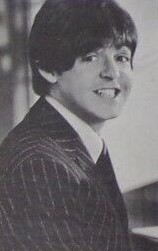 Onto track two of the tape Paul overdubbed a short but intricate electric piano passage in each bridge section as well as at the very end of the song. This is the third of three songs on the British "Help!" album to feature the Hohner "pianet," the first two being "The Night Before" and "You Like Me Too Much," both of these played by John. Onto track three, Paul and John laid down their harmony vocals. Onto track two of the tape Paul overdubbed a short but intricate electric piano passage in each bridge section as well as at the very end of the song. This is the third of three songs on the British "Help!" album to feature the Hohner "pianet," the first two being "The Night Before" and "You Like Me Too Much," both of these played by John. Onto track three, Paul and John laid down their harmony vocals.
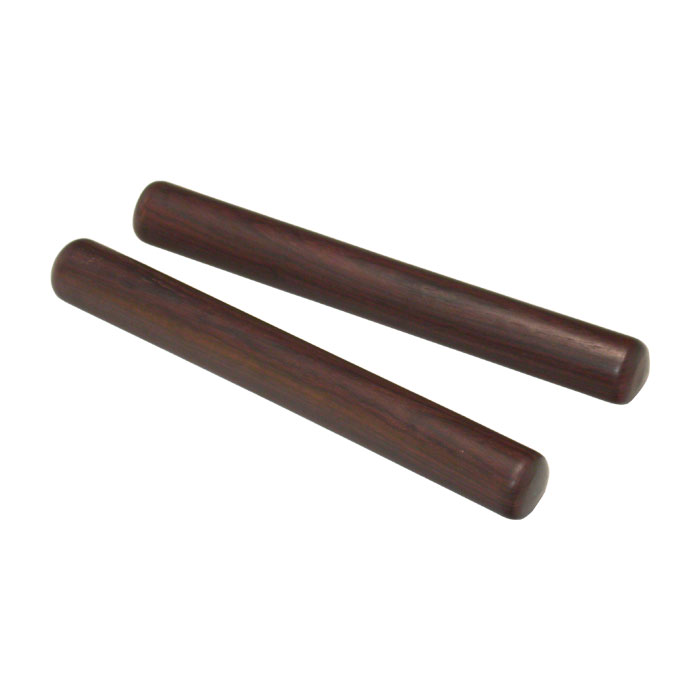 In order to fill out the song, three Beatles performed overdubs simultaneously onto track four of the tape, which then completed the song. Paul double-tracked his lead vocal, which is especially noticeable in the second and fourth line of each verse. Also, Ringo played tambourine and George played claves. Claves are percussive wooden sticks that are hit together, which were previously used the year before on "And I Love Her." In order to fill out the song, three Beatles performed overdubs simultaneously onto track four of the tape, which then completed the song. Paul double-tracked his lead vocal, which is especially noticeable in the second and fourth line of each verse. Also, Ringo played tambourine and George played claves. Claves are percussive wooden sticks that are hit together, which were previously used the year before on "And I Love Her."
 The mono mix was created on February 20th, 1965 in the control room of EMI Studio Two by producer George Martin and engineers Norman Smith and Ken Scott. This mix, along with the rest of the eleven songs being suggested for the movie, was taken by The Beatles to the Bahamas on February 22nd, 1965 where they began filming their second movie. This way, Richard Lester could choose which songs would be included in the film's soundtrack. The mono mix was created on February 20th, 1965 in the control room of EMI Studio Two by producer George Martin and engineers Norman Smith and Ken Scott. This mix, along with the rest of the eleven songs being suggested for the movie, was taken by The Beatles to the Bahamas on February 22nd, 1965 where they began filming their second movie. This way, Richard Lester could choose which songs would be included in the film's soundtrack.
 February 23rd, 1965 was the date that these eleven songs, including "Tell Me What You See," received their stereo mixes. The importance of stereo mixing was so slight that George Martin wasn't even present this day in the control room of EMI Studio Two, leaving the work to engineers Norman Smith and Malcolm Davies. February 23rd, 1965 was the date that these eleven songs, including "Tell Me What You See," received their stereo mixes. The importance of stereo mixing was so slight that George Martin wasn't even present this day in the control room of EMI Studio Two, leaving the work to engineers Norman Smith and Malcolm Davies.
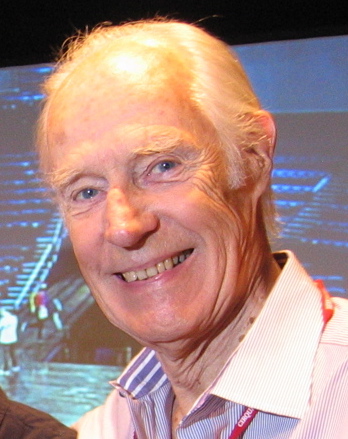 Since a decision was made to release the album in stereo on compact disc in the '80s, George Martin thought to prepare better stereo mixes of these songs in 1986 for that release. While this new mix of "Tell Me What You See" appears virtually the same as the one made in 1965, the new one was used in creating the remastered version of the CD in 2009. Since a decision was made to release the album in stereo on compact disc in the '80s, George Martin thought to prepare better stereo mixes of these songs in 1986 for that release. While this new mix of "Tell Me What You See" appears virtually the same as the one made in 1965, the new one was used in creating the remastered version of the CD in 2009.
Song Structure and Style
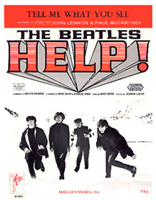 Leave it to The Beatles to once again take a standard song format, this one being the 'verse/ verse/ refrain/ verse/ refrain' structure (or aabab), and put in substantial changes to mix things up. While this format has been sparingly used by them up to this point (see "All My Loving" and "A Taste Of Honey"), this time around they add another verse and a conclusion which is actually half a portion of the refrain. There are other interesting elements thrown in along the way which we'll discuss below. Leave it to The Beatles to once again take a standard song format, this one being the 'verse/ verse/ refrain/ verse/ refrain' structure (or aabab), and put in substantial changes to mix things up. While this format has been sparingly used by them up to this point (see "All My Loving" and "A Taste Of Honey"), this time around they add another verse and a conclusion which is actually half a portion of the refrain. There are other interesting elements thrown in along the way which we'll discuss below.
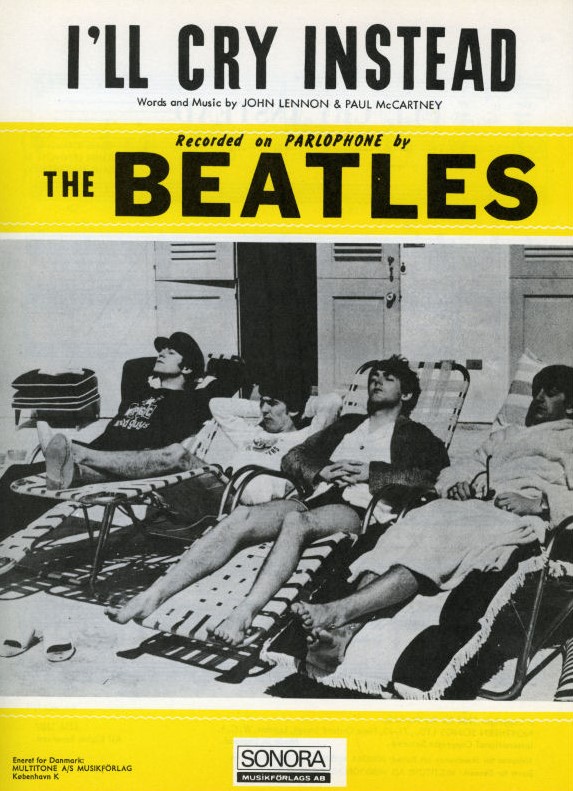 A two-measure introduction starts things off, which shows most of the musical elements already in place. Lennon's upward strum of the guitar actually precedes the one-beat of the first measure as if to take us by the hand and gently pull us into the song. This subtle device is becoming more frequent for them, as this was just used in the recently recorded "The Night Before" as well as "I'll Cry Instead" from the year before. The Latin-sounding percussion heard here, including tambourine, appears right from the start to create the rhythmic mood. John even performs another upward strum just before the second measure to give it that extra Latin flavor. Also during the introduction we can faintly hear Paul rehearse the opening notes he's about to sing ("if you let") in the stereo mix. A two-measure introduction starts things off, which shows most of the musical elements already in place. Lennon's upward strum of the guitar actually precedes the one-beat of the first measure as if to take us by the hand and gently pull us into the song. This subtle device is becoming more frequent for them, as this was just used in the recently recorded "The Night Before" as well as "I'll Cry Instead" from the year before. The Latin-sounding percussion heard here, including tambourine, appears right from the start to create the rhythmic mood. John even performs another upward strum just before the second measure to give it that extra Latin flavor. Also during the introduction we can faintly hear Paul rehearse the opening notes he's about to sing ("if you let") in the stereo mix.
The first sixteen-measure verse immediately begins right after a further upward guitar strum. Each verse could easily be divided into two eight-measure sections, the first being the "verse" section and the second being the "chorus" section but, because of a different set of lyrics in this latter section the second time around, it's easier to identify both of these sections as comprising a full verse of sixteen measures.
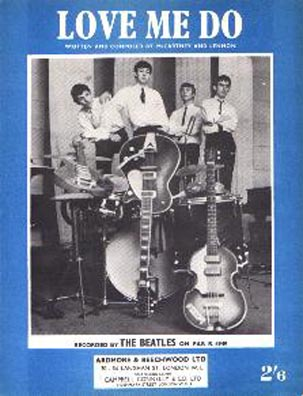 Paul and John start off the verse on the one-beat with harmonized vocals, John singing lead with Paul providing the high harmony. Paul is the designated lead singer of the song, this being determined by him being the primary songwriter and because he sings every other line in the first half of each verse solo (although double-tracked). As usually is the case, Paul defers harmony singing to himself since it is more natural for him. Therefore, in the places of the song where you hear harmony, John is singing the lead part while Paul switches to harmony. Another example of this can be seen as early as "Love Me Do," where Paul switches back and forth between lead and harmony singing during the bridge. (Another reason for this, of course, was John couldn't sing lead and play harmonica at the same time.) Paul and John start off the verse on the one-beat with harmonized vocals, John singing lead with Paul providing the high harmony. Paul is the designated lead singer of the song, this being determined by him being the primary songwriter and because he sings every other line in the first half of each verse solo (although double-tracked). As usually is the case, Paul defers harmony singing to himself since it is more natural for him. Therefore, in the places of the song where you hear harmony, John is singing the lead part while Paul switches to harmony. Another example of this can be seen as early as "Love Me Do," where Paul switches back and forth between lead and harmony singing during the bridge. (Another reason for this, of course, was John couldn't sing lead and play harmonica at the same time.)
 The style of singing in this song is also noteworthy. Although the voices begin directly on the one-beat of the first measure, they immediately jump right into singing on the off-beat (with John embarrassingly struggling to get it right), as is heard almost throughout the entire song. This adds a nice contrast to the smooth backbeat of the usual 4/4 rhythm heard throughout. As for the melody line itself, we see them start off with a full octave jump (on the words "if you") and a pleasant downward fall, which is heard in every first and third phrase of each verse. This is always followed by Paul singing a solo lead line to complete the thought. The style of singing in this song is also noteworthy. Although the voices begin directly on the one-beat of the first measure, they immediately jump right into singing on the off-beat (with John embarrassingly struggling to get it right), as is heard almost throughout the entire song. This adds a nice contrast to the smooth backbeat of the usual 4/4 rhythm heard throughout. As for the melody line itself, we see them start off with a full octave jump (on the words "if you") and a pleasant downward fall, which is heard in every first and third phrase of each verse. This is always followed by Paul singing a solo lead line to complete the thought.
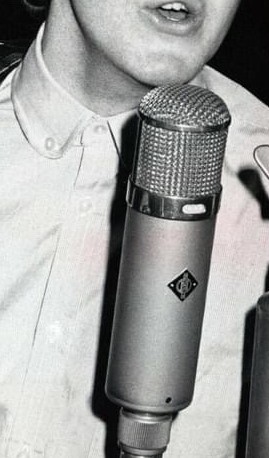 The second half of the first verse comprises Paul and John singing in unison. Comically, the emphasis on the last two words of the first and third melodic phrase are drawn out, such as on the words "eeeeys noooow." This possible inside joke may be a result of them viewing this as "not one of the better songs." The second verse is identical to the first in structure and musicianship, although we see that John is now getting the hang of hitting the off-beats in the first half. The second half of the first verse comprises Paul and John singing in unison. Comically, the emphasis on the last two words of the first and third melodic phrase are drawn out, such as on the words "eeeeys noooow." This possible inside joke may be a result of them viewing this as "not one of the better songs." The second verse is identical to the first in structure and musicianship, although we see that John is now getting the hang of hitting the off-beats in the first half.
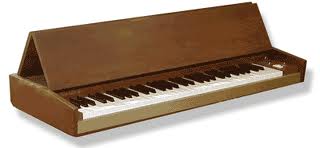 We then go into the eight measure refrain, which begins with a drawn out harmonized repeat of the title of the song. This is sung in labored half-notes as if to make certain we know with certainty what the name of the song is. As the third measure begins on the word "see," the band performs the standard "beatles break" for two measures. Here we see Paul jump in with his overdubbed electric piano part to fill in the gap (while we hear a bit of hiss from the piano circuitry during the silence). The fifth measure sees Ringo crashing in with his cymbal and playing a highly compressed rhythm on just his snare and bass drum with only Paul accompanying him on piano, until the whole band returns to normal for the final two measures of the refrain. In this way, the refrain also acts as an instrumental section of the song. We then go into the eight measure refrain, which begins with a drawn out harmonized repeat of the title of the song. This is sung in labored half-notes as if to make certain we know with certainty what the name of the song is. As the third measure begins on the word "see," the band performs the standard "beatles break" for two measures. Here we see Paul jump in with his overdubbed electric piano part to fill in the gap (while we hear a bit of hiss from the piano circuitry during the silence). The fifth measure sees Ringo crashing in with his cymbal and playing a highly compressed rhythm on just his snare and bass drum with only Paul accompanying him on piano, until the whole band returns to normal for the final two measures of the refrain. In this way, the refrain also acts as an instrumental section of the song.
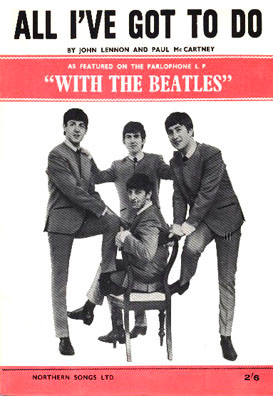 A third verse is then heard, which still shows John rushing the syncopated rhythm of the melody line. After the refrain is identically repeated, the third verse is heard for the second time, but John now tries hard to get the timing of his syncopated vocals correct and finally nails it. Afterwards, a modified refrain acts as the conclusion of the song. Instead of singing the title of the song again, Paul and John hum the notes, not unlike the similar effect created on "All I've Got To Do" a year and a half earlier. The "beatles break" then becomes the end of the song, only to be outdone by Paul's overdubbed electric piano riff as heard during the other refrains of the song. This becomes the final word, albeit with even more noticeable hiss from the keyboard's circuitry. A third verse is then heard, which still shows John rushing the syncopated rhythm of the melody line. After the refrain is identically repeated, the third verse is heard for the second time, but John now tries hard to get the timing of his syncopated vocals correct and finally nails it. Afterwards, a modified refrain acts as the conclusion of the song. Instead of singing the title of the song again, Paul and John hum the notes, not unlike the similar effect created on "All I've Got To Do" a year and a half earlier. The "beatles break" then becomes the end of the song, only to be outdone by Paul's overdubbed electric piano riff as heard during the other refrains of the song. This becomes the final word, albeit with even more noticeable hiss from the keyboard's circuitry.
 Although John's presence is definitely felt, it is Paul who takes center stage on this song. His attention to detail in his vocal delivery is evidence of him being the song's primary composer (if not entire composer). While his bass work is rudimentary in comparison to much of his earlier work, it's quite higher in the mix this time around. Especially noteworthy is his keyboard work which is interjected only during the refrains and conclusion. They were prone to work this way at this stage of the game, not to include the keyboards throughout a track but only as an embellishment in certain parts. Other recent songs to do this were "What You're Doing" and the acoustic piano in "You Like Me Too Much." Although John's presence is definitely felt, it is Paul who takes center stage on this song. His attention to detail in his vocal delivery is evidence of him being the song's primary composer (if not entire composer). While his bass work is rudimentary in comparison to much of his earlier work, it's quite higher in the mix this time around. Especially noteworthy is his keyboard work which is interjected only during the refrains and conclusion. They were prone to work this way at this stage of the game, not to include the keyboards throughout a track but only as an embellishment in certain parts. Other recent songs to do this were "What You're Doing" and the acoustic piano in "You Like Me Too Much."
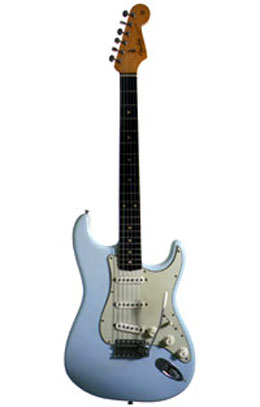 John performs his rhythm guitar in quite a Latin-sounding fashion with upward guitar strums and up-strokes as if played on an acoustic guitar (which was in fact played with his newly acquired Fender Stratocaster electric as mentinoed above). His distinctively nasal overtones are prominently heard throughout most of the song and, while struggling to get the syncopated timing right, he ends up putting in a confident performance. John performs his rhythm guitar in quite a Latin-sounding fashion with upward guitar strums and up-strokes as if played on an acoustic guitar (which was in fact played with his newly acquired Fender Stratocaster electric as mentinoed above). His distinctively nasal overtones are prominently heard throughout most of the song and, while struggling to get the syncopated timing right, he ends up putting in a confident performance.
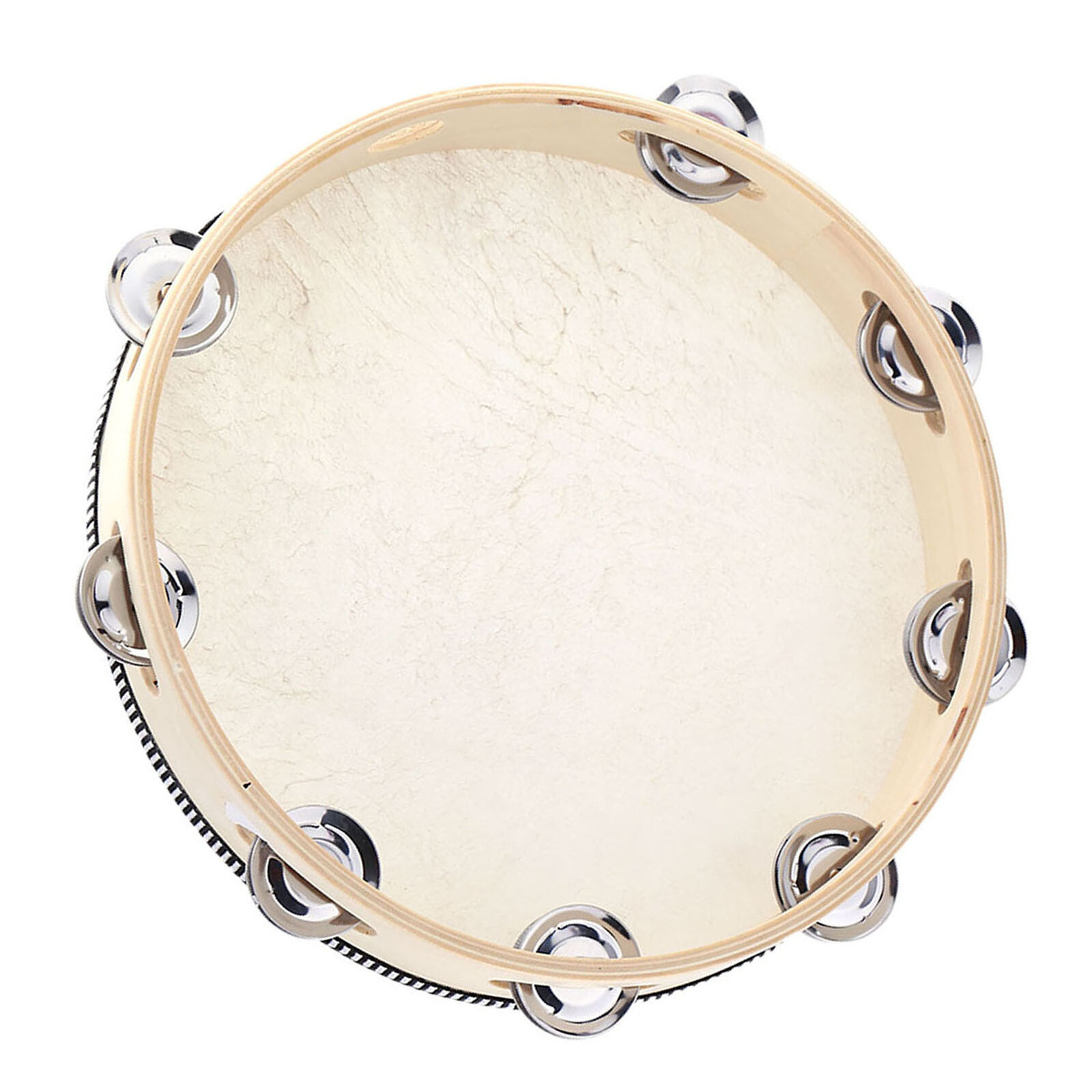 Ringo's drumming is pretty straightforward throughout, with his closed hi-hat and basic 4/4 drum beat. After the break occurs in the refrains, however, he kicks it up with a strident forcefulness that can't help but be noticed, followed by a simple drum fill that signals the business-as-usual approach of the rest of the song. His overdubbed tambourine (especially during the first two measures of the refrains and conclusion) make him appear as the man-in-charge, percussion wise. Ringo's drumming is pretty straightforward throughout, with his closed hi-hat and basic 4/4 drum beat. After the break occurs in the refrains, however, he kicks it up with a strident forcefulness that can't help but be noticed, followed by a simple drum fill that signals the business-as-usual approach of the rest of the song. His overdubbed tambourine (especially during the first two measures of the refrains and conclusion) make him appear as the man-in-charge, percussion wise.
George's entire role on "Tell Me What You See" appears to be that of "Latin American percussion," him playing a guiro during the rhythm track and claves as a later overdub. He impressively plays the guiro with a good amount of finesse and then works the claves appropriately to give the song a good Latin feel overall.
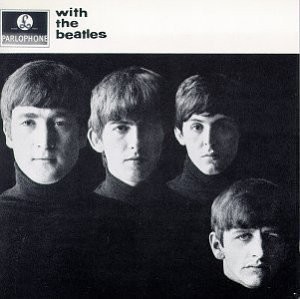 While The Beatles had been showing themselves much more expressive and personal in their lyric writing up until this point, they still hadn't shaken themselves from writing songs with hypothetical romantic subject matter. This being a classic case, which may have fitted in nicely on the British "With The Beatles" album, it displays the singer requesting a girl to open up to him. "Open up your eyes, now, tell me what you see," depicts honesty and openness as his dominant qualities. "What you see is me" shows that he is not hiding any secret agenda. Paul, as much as John, always prided himself on clever lyrics, which in this case point to the line "we will never be apart, if I'm part of you." While The Beatles had been showing themselves much more expressive and personal in their lyric writing up until this point, they still hadn't shaken themselves from writing songs with hypothetical romantic subject matter. This being a classic case, which may have fitted in nicely on the British "With The Beatles" album, it displays the singer requesting a girl to open up to him. "Open up your eyes, now, tell me what you see," depicts honesty and openness as his dominant qualities. "What you see is me" shows that he is not hiding any secret agenda. Paul, as much as John, always prided himself on clever lyrics, which in this case point to the line "we will never be apart, if I'm part of you."
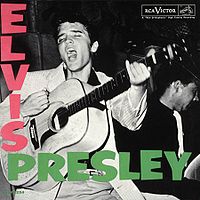 It appears that Paul gave a gentle tip of the hat to one of their musical heroes in the lyrics to this song. "Elvis made a huge impression on us," McCartney stated in the book "Anthology." Being especially impressed with his early Sun recordings, his rendition of the McCoy / Singleton composition "Trying To Get To You" made a big enough impact on Paul that he and George wrote the first original Beatles composition to be recorded, "In Spite Of All The Danger," based on that Elvis song. Therefore, Paul's inclusion of the line "can't you try to see that I'm trying to get to you" is no doubt a reference to his early idol. It appears that Paul gave a gentle tip of the hat to one of their musical heroes in the lyrics to this song. "Elvis made a huge impression on us," McCartney stated in the book "Anthology." Being especially impressed with his early Sun recordings, his rendition of the McCoy / Singleton composition "Trying To Get To You" made a big enough impact on Paul that he and George wrote the first original Beatles composition to be recorded, "In Spite Of All The Danger," based on that Elvis song. Therefore, Paul's inclusion of the line "can't you try to see that I'm trying to get to you" is no doubt a reference to his early idol.
American Releases
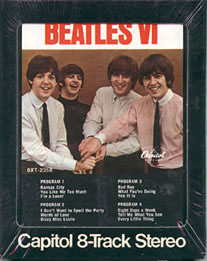 America got to hear "Tell Me What You See" nearly two months before Britain did, on the Capitol album "Beatles VI," which was released on June 14th, 1965. Its placement as next to last on the album may be an indication of how less-than-enthusiastic the label was about the song, even though it was premiered in the US before anywhere else. This album was then released on compact disc on January 21st, 2014, both the mono and stereo versions of the album contained on one CD. America got to hear "Tell Me What You See" nearly two months before Britain did, on the Capitol album "Beatles VI," which was released on June 14th, 1965. Its placement as next to last on the album may be an indication of how less-than-enthusiastic the label was about the song, even though it was premiered in the US before anywhere else. This album was then released on compact disc on January 21st, 2014, both the mono and stereo versions of the album contained on one CD.
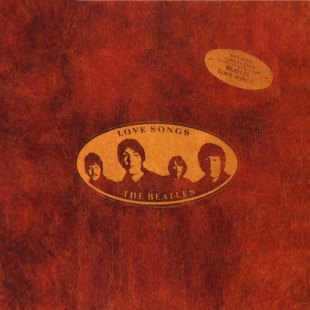 However, Capitol thought enough of the song to include it on their compilation double-album "Love Songs," which was released on October 21st, 1977. This album followed the late '70s trend of being available in limited supply on colored vinyl, yellow being the choice color for this collection. However, Capitol thought enough of the song to include it on their compilation double-album "Love Songs," which was released on October 21st, 1977. This album followed the late '70s trend of being available in limited supply on colored vinyl, yellow being the choice color for this collection.
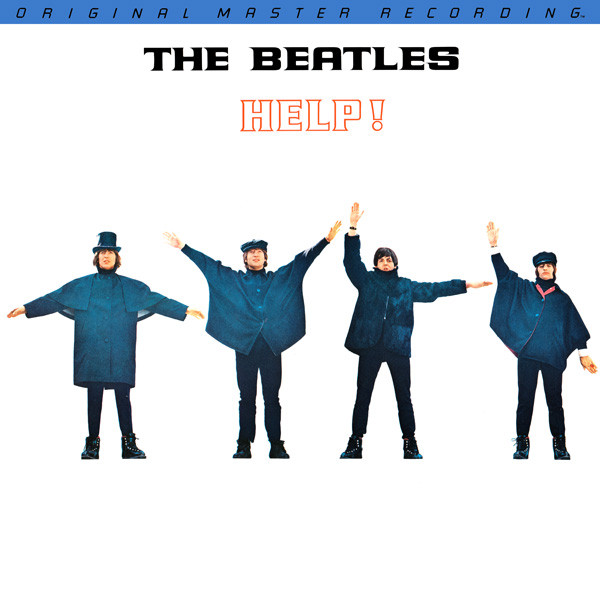 The first time the original British "Help!" album was made available in the US was the "Original Master Recording" vinyl edition released through Mobile Fidelity Sound Lab in January of 1986. This album included "Tell Me What You See" and was prepared utilizing half-speed mastering technology from the original master tape on loan from EMI. This version of the album was only available for a short time and is quite collectible today. The first time the original British "Help!" album was made available in the US was the "Original Master Recording" vinyl edition released through Mobile Fidelity Sound Lab in January of 1986. This album included "Tell Me What You See" and was prepared utilizing half-speed mastering technology from the original master tape on loan from EMI. This version of the album was only available for a short time and is quite collectible today.
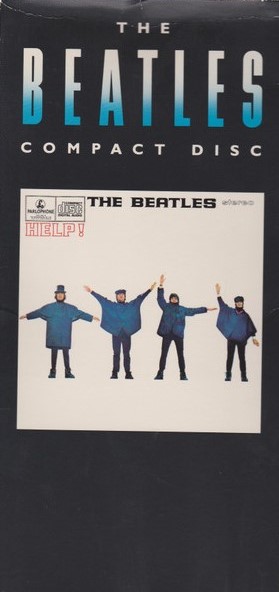 April 30th, 1987 was the date the original British "Help!" album was released on compact disc, a vinyl version coming out on July 21st, 1987. "Tell Me What You See," as well as all the songs on these releases, were re-mixed for stereo by George Martin in 1986. The remastered version of this CD was released on September 9th, 2009, but the 1986 stereo mix was still used. This exact remastered mix of the album was then released on vinyl in the US on November 13th, 2012. April 30th, 1987 was the date the original British "Help!" album was released on compact disc, a vinyl version coming out on July 21st, 1987. "Tell Me What You See," as well as all the songs on these releases, were re-mixed for stereo by George Martin in 1986. The remastered version of this CD was released on September 9th, 2009, but the 1986 stereo mix was still used. This exact remastered mix of the album was then released on vinyl in the US on November 13th, 2012.
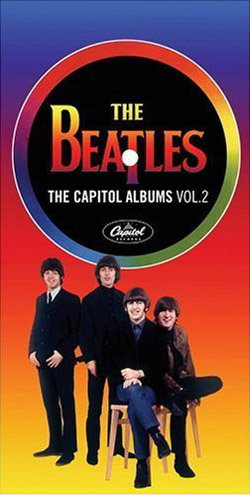 Capitol put together a second box set entitled "The Capitol Albums, Vol. 2" which was released on April 11th, 2006. The entire "Beatles VI" album was contained in this set, which included both the 1965 mono and stereo mixes of "Tell Me What You See." For initial pressings of this set, Capitol mistakenly presented a "mono type-B" mono mix for the entire "Beatles VI" album, which was a method that combined both the left and right channels of the stereo mix to create a mono mix. Therefore, the mono mix of "Tell Me What You See" in this set was initially prepared in this way, the error being corrected on subsequent pressings. Capitol put together a second box set entitled "The Capitol Albums, Vol. 2" which was released on April 11th, 2006. The entire "Beatles VI" album was contained in this set, which included both the 1965 mono and stereo mixes of "Tell Me What You See." For initial pressings of this set, Capitol mistakenly presented a "mono type-B" mono mix for the entire "Beatles VI" album, which was a method that combined both the left and right channels of the stereo mix to create a mono mix. Therefore, the mono mix of "Tell Me What You See" in this set was initially prepared in this way, the error being corrected on subsequent pressings.
Another place to find the original 1965 stereo mix of "Tell Me What You See" is on the September 9th, 2009 released CD box set "The Beatles In Mono," which includes the entire Beatles catalog that was originally mixed in mono in the '60s. The original stereo mixes of both the albums "Help!" and "Rubber Soul" are contained in this set as well, the vinyl edition of this box set being first released on September 9th, 2014.
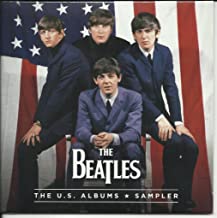 In promotion of the 2014 box set "The US Albums," a 25-song sampler CD was manufactured for limited release on January 21st, 2014, this containing the stereo mix of "Tell Me What You See." In promotion of the 2014 box set "The US Albums," a 25-song sampler CD was manufactured for limited release on January 21st, 2014, this containing the stereo mix of "Tell Me What You See."
Live Performances
It appears that The Beatles had no intention of performing the song live, being that they considered it "not one of the better songs," as McCartney called it. Therefore, it never made it to a Beatles stage, or to a solo-Beatles stage.
Conclusion
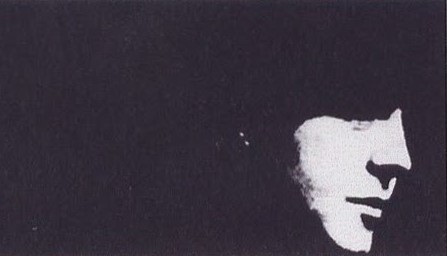 While "Tell Me What You See" isn't a standout track on either the British or American album, it displays a maturity of songwriting and arrangement that points forward to what they would tackle later that year on "Rubber Soul" and beyond. The composition may have been put together with a minimalistic approach, but the instrumentation used further displays their penchant for experimentation. There definitely is much to "see" in this song when you care to take a look. While "Tell Me What You See" isn't a standout track on either the British or American album, it displays a maturity of songwriting and arrangement that points forward to what they would tackle later that year on "Rubber Soul" and beyond. The composition may have been put together with a minimalistic approach, but the instrumentation used further displays their penchant for experimentation. There definitely is much to "see" in this song when you care to take a look.
Song Summary
"Tell Me What You See"
Written by: John Lennon / Paul McCartney
Instrumentation (most likely):
- Paul McCartney - Lead Vocals, Bass Guitar (1963 Hofner 500/1), electric piano (1964 Hohner Pianet C)
- John Lennon - Rhythm Guitar (1961 Sonic Blue Fender Stratocaster), Backing Vocals
- George Harrison - guiro, claves
- Ringo Starr - Drums (1964 Ludwig Super Classic Black Oyster Pearl) tambourine
Written and compiled by Dave Rybaczewski
|
IF YOU WOULD LIKE TO MAKE A DONATION TO KEEP THIS WEBSITE UP AND RUNNING, PLEASE CLICK BELOW!
|